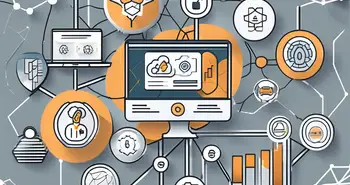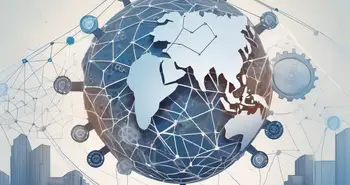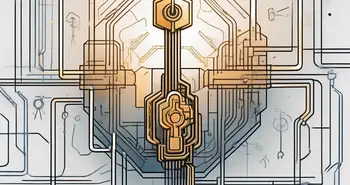The Rise of Decentralized Physical Infrastructure (DePin)

Decentralized Physical Infrastructure (DePin) is revolutionizing the way we think about and interact with the systems that support our daily lives. By embracing new technologies and reimagining traditional physical infrastructure systems, DePin offers a more efficient, sustainable, and resilient approach to meet the growing needs of our modern society. In this article, I will delve into the concept of DePin, explore its core principles, discuss its impact on various sectors, examine the driving forces behind its rise, and address the challenges and solutions associated with its implementation.
Understanding Decentralized Physical Infrastructure
Before diving into the intricacies of DePin, it's crucial to understand its definition. DePin refers to a network of physical infrastructure that is decentralized and distributed across various locations. Unlike traditional infrastructure systems, which are typically centralized and depend on a single point of control, DePin enables the sharing of resources and services through interconnected nodes.
Defining Decentralized Physical Infrastructure (DePin)
DePin encompasses a wide range of sectors, including energy and utilities, transportation and logistics, healthcare, communication, and more. It leverages advancements in technology, such as the Internet of Things (IoT), blockchain, and artificial intelligence, to create a collaborative and efficient ecosystem.
The Core Principles of DePin
At the heart of DePin lie several core principles that differentiate it from traditional infrastructure systems:
- Redundancy: DePin incorporates redundancy measures to ensure system resilience and minimize disruptions. By distributing resources across multiple nodes, it reduces the likelihood of system failure.
- Interconnectivity: Nodes within the DePin network are interconnected, enabling seamless communication and resource sharing. This interconnectivity enhances efficiency and improves overall system performance.
- Scalability: DePin is designed to scale effortlessly, allowing for easy expansion and adaptation to changing demands. As the network grows, it can accommodate a larger user base without sacrificing performance.
- Sustainability: DePin promotes sustainable practices by optimizing resource utilization and reducing waste. It encourages the integration of renewable energy sources, efficient transportation systems, and eco-friendly technologies.
Let's delve deeper into each of these core principles to gain a better understanding of how they contribute to the success of DePin.
Redundancy: In traditional infrastructure systems, a single point of failure can lead to catastrophic consequences. DePin addresses this vulnerability by incorporating redundancy measures. By distributing resources across multiple nodes, it ensures that even if one node fails, the system can continue to function without disruption. This redundancy not only enhances system resilience but also provides a sense of security and reliability to users.
Interconnectivity: One of the key advantages of DePin is its ability to seamlessly connect nodes within the network. This interconnectivity enables efficient communication and resource sharing, leading to improved system performance. For example, in the transportation and logistics sector, interconnected nodes can exchange real-time data on traffic conditions, enabling more efficient route planning and reducing congestion. In healthcare, interconnectivity allows for the seamless transfer of patient records between different healthcare providers, ensuring continuity of care and reducing medical errors.
Scalability: The ability to scale effortlessly is a crucial aspect of DePin. As the network grows and user demands increase, DePin can adapt and expand without compromising performance. This scalability is achieved through the use of flexible and modular infrastructure components. For instance, in the energy sector, DePin can accommodate the integration of new renewable energy sources as they become available, allowing for a smooth transition to a more sustainable energy system.
Sustainability: DePin is inherently aligned with sustainable practices. By optimizing resource utilization and reducing waste, it minimizes the environmental impact of infrastructure systems. For example, in the energy sector, DePin encourages the adoption of energy-efficient technologies and the integration of renewable energy sources. In transportation, it promotes the use of electric vehicles and the development of efficient public transportation systems. By prioritizing sustainability, DePin aims to create a more environmentally friendly and resilient infrastructure network.
By understanding these core principles, we can begin to grasp the transformative potential of DePin. Its decentralized and interconnected nature, coupled with its focus on redundancy, scalability, and sustainability, paves the way for a more efficient, resilient, and sustainable infrastructure ecosystem.
The Evolution of Physical Infrastructure
To fully appreciate the significance of DePin, it's essential to examine the evolution of physical infrastructure systems.
Physical infrastructure has played a crucial role in shaping societies and economies throughout history. From the ancient Roman aqueducts to the modern-day internet backbone, the development of infrastructure has been a cornerstone of progress. As populations grew and cities expanded, the need for robust infrastructure systems became increasingly apparent, leading to innovations in transportation, communication, and utilities.
Traditional Physical Infrastructure Systems
Traditional physical infrastructure systems have been traditionally centralized, relying on a hierarchical structure with a central authority. While these systems have served us well, they have limitations in terms of scalability, flexibility, and resilience. Centralized infrastructure systems are vulnerable to single points of failure and can be costly to maintain and upgrade.
Despite their shortcomings, centralized infrastructure systems have been the norm for centuries. Governments and large corporations have been the primary drivers of infrastructure development, investing heavily in roads, bridges, power plants, and other critical assets. However, the drawbacks of centralization have become more apparent in an increasingly interconnected world, prompting a reevaluation of traditional infrastructure models.
The Shift Towards Decentralization
In recent years, there has been a noticeable shift towards decentralization in various industries. This shift is driven by the need for more flexible, efficient, and resilient infrastructure systems. DePin offers a compelling alternative by leveraging technology to create a network of interconnected nodes, eliminating the drawbacks associated with centralized systems.
Decentralized infrastructure systems distribute power and decision-making across a network of nodes, reducing the risk of catastrophic failures and improving overall system performance. By harnessing the collective resources and expertise of a distributed network, decentralized infrastructure can adapt to changing conditions more effectively and provide greater transparency and accountability.
The Driving Forces Behind DePin
Several driving forces are paving the way for the rise of DePin:
Technological Advancements Facilitating DePin
Advancements in technology, such as IoT, blockchain, and artificial intelligence, play a crucial role in enabling DePin. These technologies provide the necessary tools to connect, monitor, and manage the decentralized infrastructure effectively. They enhance system efficiency, security, and data transparency.
Economic and Social Factors Influencing DePin
The demand for sustainable and resilient infrastructure solutions, coupled with the need to reduce costs and improve resource allocation, is driving the adoption of DePin. In an era where environmental impact and societal well-being are paramount, DePin offers a more economically and socially viable approach.
The Impact of DePin on Various Sectors
DePin is transforming multiple sectors by revolutionizing the way services are delivered and resources are managed:
DePin in Energy and Utilities
In the energy and utilities sector, DePin enables the integration of renewable energy sources, enhances grid stability, and improves energy efficiency. It empowers individuals and communities to generate, store, and share energy, facilitating the transition towards a more sustainable and decentralized energy system.
DePin in Transportation and Logistics
Decentralized physical infrastructure has the potential to revolutionize transportation and logistics systems. Through interconnected nodes, it optimizes route planning, reduces congestion and emissions, and enhances last-mile delivery. DePin also facilitates the adoption of autonomous vehicles and smart transportation solutions.
The Challenges and Solutions of Implementing DePin
Implementing DePin comes with its fair share of challenges, but innovative solutions are emerging to overcome these hurdles:
Overcoming Regulatory and Technical Barriers
Regulatory frameworks need to adapt to support the deployment of DePin. Policy and regulatory bodies must embrace the flexibility, scalability, and privacy aspects of decentralized infrastructure. Additionally, technical challenges, such as interoperability and data security, require continuous innovation to ensure the seamless integration of decentralized systems.
Ensuring Security and Privacy in DePin
As the reliance on decentralized infrastructure grows, it becomes essential to address security and privacy concerns. Robust encryption methods, identity verification mechanisms, and decentralized governance models are being developed to protect sensitive data and ensure user trust in the system.
Throughout my career as an expert in DePin, I have witnessed firsthand the positive impact it can have on society. I have seen communities empowered by decentralized energy systems, witnessed the efficient flow of goods through decentralized logistics networks, and marveled at the resilience of decentralized communication infrastructure in times of crisis. My advice to those interested in DePin is to stay informed and engaged. Embrace the possibilities that technological advancements offer and advocate for policies that foster innovation and decentralization.
FAQ
What is Decentralized Physical Infrastructure (DePin)?
DePin is a network of physical infrastructure that is decentralized and distributed across various locations. It leverages technology to create a collaborative and efficient ecosystem.
What are the core principles of DePin?
The core principles of DePin include redundancy, interconnectivity, scalability, and sustainability.
How does DePin impact the energy and utilities sector?
DePin enables the integration of renewable energy sources, enhances grid stability, and improves energy efficiency. It also allows individuals and communities to generate, store, and share energy.
What challenges are associated with implementing DePin?
Implementing DePin involves overcoming regulatory and technical barriers, ensuring security and privacy, and fostering interoperability and data standardization.
What advice do you have for those interested in DePin?
Stay informed, embrace technological advancements, and advocate for policies that support innovation and decentralization. Together, we can shape a more efficient and sustainable future.
As we embrace the transformative potential of Decentralized Physical Infrastructure (DePin), it's clear that the principles of efficiency, sustainability, and resilience are also at the heart of innovative trading platforms like Morpher. With its groundbreaking approach to investing, Morpher.com aligns perfectly with the ethos of DePin, offering a trading experience that's not only decentralized but also free from traditional constraints. Embrace the future of trading with zero fees, infinite liquidity, and the safety of a non-custodial wallet. Whether you're interested in stocks, cryptocurrencies, or even niche markets like NFTs, Morpher provides the tools for a seamless and empowered trading journey. Sign Up and Get Your Free Sign Up Bonus today, and join the vanguard of investors who are reshaping the world's financial landscapes in harmony with DePin's visionary infrastructure.

Disclaimer: All investments involve risk, and the past performance of a security, industry, sector, market, financial product, trading strategy, or individual’s trading does not guarantee future results or returns. Investors are fully responsible for any investment decisions they make. Such decisions should be based solely on an evaluation of their financial circumstances, investment objectives, risk tolerance, and liquidity needs. This post does not constitute investment advice.

Painless trading for everyone
Hundreds of markets all in one place - Apple, Bitcoin, Gold, Watches, NFTs, Sneakers and so much more.

Painless trading for everyone
Hundreds of markets all in one place - Apple, Bitcoin, Gold, Watches, NFTs, Sneakers and so much more.









